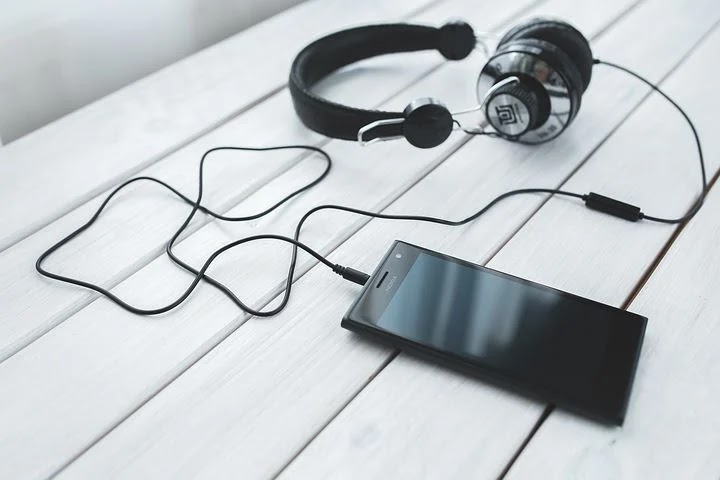When it comes to listening to music, we’ve all got something to say. Whether it’s about your favourite song, an artist you love, or just a tune that gets you going while jogging — there’s one thing that we can all agree on: headphones are awesome! But while the market is saturated with a ton of different options and new tech is being invented every day, one thing remains constant: the earphone jack. But has this little audio port reached its peak? Will consumers begin to demand something more from their headphones?
{tocify} $title={Table of Contents}
1. The future of headphones is here!
There are a lot of new products that are coming out in the audio space that are really exciting. The first thing is that Bluetooth headphones are becoming more and more popular and they are really great because you can do anything with them.No more tangled wires, no more carrying an extra cable to the music studio, and no more frustrations with trying to get people to use your headphones in certain ways.
Bluetooth headphones are a small component of a music producer’s gear. Some studios do still install their cable. But most recording engineers are now using wireless headphones or Bluetooth headphones that are designed to work with the equipment they already have at their work.
Features like variable noise cancelling mean that these headphones are incredibly versatile. They can be enjoyed alongside your defined music production workflow and they can also be great for social situations. Having a Bluetooth headphone that can connect to popular streaming services and be used there too makes it ideal for everyday use. And similar to how your phone now charges with a USB-C cable rather than a cable that the phone uses, headphones like these are here to stay.
These headphones are great because they are portable, lightweight, and they fit in most of your studio gear. They are not that expensive, which adds to their versatility and ease of use. Their battery also lasts a long time and help to prevent them from running out of battery during a long recording session. In short, everyone can benefit from these headphones.
A disadvantage of these headphones is that that they can only be used with one device at a time. Each device has a different range and some may even be unable to work due to interference from certain wireless devices.
2. Wireless technology in headphones makes for a better listening experience
If you’re going to invest in a pair of headphones, it’s worth it to get a pair that will be compatible with the rest of your wireless technology. Wired headphones are great, but you’re going to have to deal with wires, which is a little annoying.Who likes wires?! Actually, not me. But the reality is that you’ll want a pair of headphones that can connect to your wireless devices, also known as a Bluetooth headphone.
In 2017, Apple included the new Lightning port in the iPhone 12 lineup. The port allows devices such as Apple headphones or AirPods to connect to iPhones and iPads such as the new iPhone 11 and iPad Air. These new Apple headphones also support MagSafe for wireless charging, so you don’t have to worry about reconnecting your headphones to your phone for charging. Additionally, since they were built for the iPhone and eliminated the traditional 3.5mm analog audio port, these headphones will play nice with all your other electronic devices. But the port was only on their phones. The port for headphones still has to go elsewhere, and as I am sure you’re already aware, the competition is fierce.
Bluetooth headphones have some benefits over their wired counterparts. They don’t need to be plugged in to your device like the power adapter does for your device. In addition, unlike connecting your device through the headphone jack, Bluetooth headphones ensure that there’s no delay when transferring audio from your device to your headphones. This means that whenever you play music from your device to your headphones, there won’t be any delay between pressing the power key and hearing the music instantly.
Bluetooth headphones are also able to connect to multiple devices from different wireless devices, depending on their Bluetooth technology. This allows you to pair multiple devices, for example among your phone, iPad, and Mac for example, and make each device share the same audio. This feature has been around since 2018, but now it’s making its way to headphones.
3. New sound technology means that you can hear your music better than ever before
The most important thing to remember with noise-cancelling headphones is that they don’t have to be expensive to be good. The market is still flooded with high-end headphones that cost hundreds of pounds, but, most of the time, they don’t provide a better listening experience than cheaper headphones.If quality is indeed what you truly want, then the last thing you should do before you pick up any headphones is spend more than the cost of an iPhone. In comparison to other audiophile-level audio gear, Apple has managed to make their headphones sound nice and have a reasonably-priced price to accompany the performance they provide.
Thankfully, this also means that noise-cancelling headphones with decent battery lives don’t have to be expensive. Luckily, this also means that noise-cancelling headphones with decent battery lives don’t have to be expensive
For example, JBL released a pair of headphones and an amp called the Quantum 9000, released in 2018. They work by connecting to your device with Lightning, USB-C, or micro USB, and supercharge them to listen to music at lower decibel levels while listening to reduce outside noise. You can still stream sound out of the headphones through your phone, which is nice, as well as control music volume. These are also on sale for a really good price (around $130) and they sound surprisingly good for the sake of convenience.
JBL’s headphones are pocket-able, have a decent battery, and sound great, so the main care with them will be how long you can listen to them without needing to wait for them to charge. For me, they’re perfectly-suited for regular listening, and by adding a Lightning cable to the port allows for some serious versatility. Yes, I would love to be able to pump a lot louder than 85 dB without the fear of excessive hearing loss.
Yes, I would love to be able to pump a lot louder than 85 dB without the fear of excessive hearing loss.
4. Wearable tech can translate speech to your language, or even to the voice of your favourite artist!
Smartwatches have been around for a few years now, but the technology behind them is evolving quickly. While you may not be able to wear a gadget that can accurately translate your speech to another language (yet), you can wear a smartwatch that can translate the speech of others to your native language, and even set it to the voice of your favourite artist!
As technology has advanced, so has the technology behind smartwatches. For example, frequencies are no longer referenced by their 10 or 11-millimeter dimensions but instead measured in nanometers. While previously antennas would need to be quite large in order to play audio over such short distances, powerful new wireless technology means these watches can better tune in on the right frequency.

Apple may have taken the lead in adopting this technology when they created the first-ever watch that could listen to music wirelessly. With the ability to decode music from the microphone, the Apple Watch — which was known as the Health & Fitness version of the device — became one of the first watches to be compatible with Bluetooth headphones. It was an incredibly popular feature at the time and allowed Apple to easily have their watch act as a wireless Bluetooth speaker when other people were around. Today, this same flexible, energy-efficient technology is used by both fitness and communication watches. Other manufacturers have followed Apple’s lead and are now following with their own audio products. Recently, Samsung even announced that their new Bixby Bang Edition watch is able to listen to Alexa and Siri stories, play music on Spotify and Tidal, and dictate text and voice commands.
Wireless technology is still being developed and refined, but if you’re on a budget, there are plenty of great wireless earphones that will let you listen to music, check your notifications, etc. While these speakers usually tend to be less expensive than wireless earphones, they haven’t always been as effective in terms of reception, so be sure to measure your headphones before you buy them to ensure they’re compatible.
5. Hear new sounds and listen to music like never before with headphone innovations now!
This is one of the best times in history to be a music lover. Innovation in the headphone industry is at an all-time high, making it easier than ever to hear new sounds and listen to music like you’ve never experienced before.It also makes it that much more crucial that you invest in good, quality headphones.
Collection companies pieces of the puzzle
Not only do earphones play an essential role in our music-listening experience, they are also a cornerstone of any audiophile collection. Studios use headphones to recreate popular songs to fit onto vinyl discs. The sound quality depends on no fewer than 147 individual components working together to make up the final product, and making sure they all work harmoniously takes time, resources, and a whole lot of dedicated love.
HANDS-ON REFLECTIVE HEADPHONES
There are analog, hands-on style headphones that emulate the sound they’re meant to produce – the kind you’ll wear in the club, or while standing on the moon. Vintage styled headphones, a nod to the past, are so sought after that boutique headphone manufacturers have sprung up in recent years. Planar Magnetic is one of the most well-known names in this category of headphones. Their products are part of the Audiophile collection and are sold at select B2B companies such as Aimclear.
Headphones for listening to music while working out
There are possible scenarios of working out where headphones like these may make a lot of sense.












0 Comments